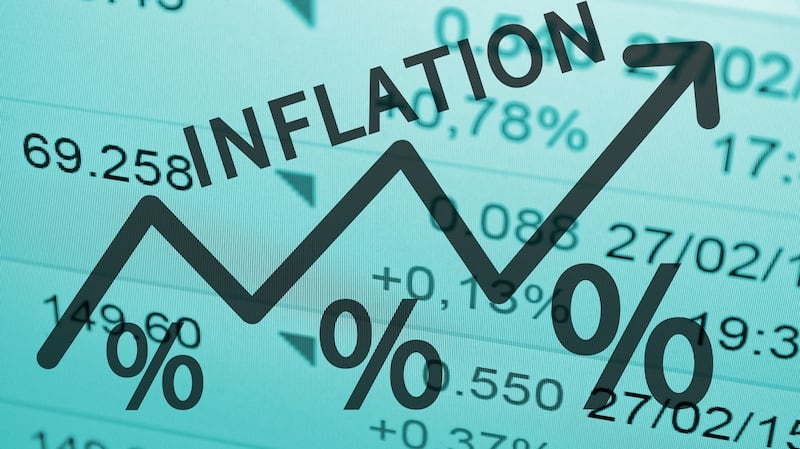Inflation has gone out of fashion in Ireland as the price level today is the same as it was in 2008. Looking at the last nine years, we saw a fall in prices in 2009 of 4.5 per cent; thereafter prices have very slowly returned to their pre-crisis level. While inflation is traditionally seen as damaging economic welfare, this low rate of inflation has brought its own problems.
From 1973 through to the start of EMU in 1999, inflation averaged 8 per cent a year. However, the rate of inflation was extremely volatile over this period, especially in the 1970s and the early 1980s. For example, in 1975 and 1981 the inflation rate was over 20 per cent.
One of the costs to society of the uncertain inflation rate was that real interest rates – the difference between the nominal interest rate and the rate of inflation – were very high
This high and volatile rate of inflation imposed significant costs on society. For example, it meant that employees who agreed to what they thought was a real pay increase for the coming year could find their purchasing power actually reduced by a surprise increase in inflation. Similarly employers could find themselves out on a limb if inflation suddenly fell. For savers a surprise increase in inflation acted as a major tax on what they had put by for retirement.

In the early 1970s, the blame for the high rate of inflation was put on unduly generous pay increases and an “excessive” rise in other domestic costs. However, by 1976 the underlying cause of the problem was identified: the combination of a fixed exchange rate with sterling and the very lax monetary policy regime pursued by the Bank of England. Irish prices followed those in the UK which, in turn, were affected by the continuous fall in the value of sterling.
Early 1980s
While the role of monetary policy in causing excessive inflation was identified, it took some time to move to a regime that would moderate the inflationary pressures. In 1976 consideration was given to revaluing the Irish pound against sterling but this was seen to be too radical a departure. The fiscal crisis in the first half of the 1980s also discouraged action to bring inflation under control. From the mid-1980s onwards, inflation gradually fell back to an average of between 2.5 per cent and 3 per cent a year over the period 1985 to 1999.
One of the costs to society of the uncertain inflation rate was that real interest rates – the difference between the nominal interest rate and the rate of inflation – were very high. Over the period 1979 to 1999, real interest rates in Ireland averaged two percentage points higher than in Germany. As a result, financing investment in Ireland was much more expensive than in Germany, significantly hampering growth. One manifestation of the resulting underinvestment was that the stock of housing in Ireland in the 1990s was too low for the growing population.

The Euro regime, which began in 1999, was designed to produce a stable and low inflation rate of 2 per cent a year. The combination of a low and predictable rate of inflation was designed to improve the welfare of Euro area residents. For Ireland the new regime delivered in terms of the average rate of inflation – exactly 2 per cent a year between 1999 and 2016. However, while the inflation rate, averaged over the full period, has been on target, it has not prevented the recent experience of falling or very low inflation.
Contracts for rents signed in the boom assumed inflation, with upward only rent reviews. When prices fell, fixed rents caused mayhem
Great recession
The absence of inflation since 2008, reflecting the effects of the great recession, has had significant negative welfare effects through a range of channels. In the face of falling output and zero inflation, the appropriate response for the European Central Bank was to cut interest rates. However, interest rates were already low before the crisis so that the cut in rates when the recession began was wholly inadequate to restore inflation to 2 per cent. Instead the ECB has had to use a range of other less effective measures to try and restore inflation.

In addition to rendering monetary policy less effective, low or falling inflation has other welfare costs. For example, contracts for rents signed in the boom assumed inflation, with upward only rent reviews. When prices fell, fixed rents caused mayhem.
After the recent experience of a prolonged period of zero inflation, some leading economists, such as former International Monetary Fund chief economist Olivier Blanchard, have suggested the ECB should target a higher rate of inflation of 4 per cent. This would leave much more room to cut interest rates in times of crisis and lessen the chances of future problems. However, there seems to be little appetite to reopen this issue at EU level.












